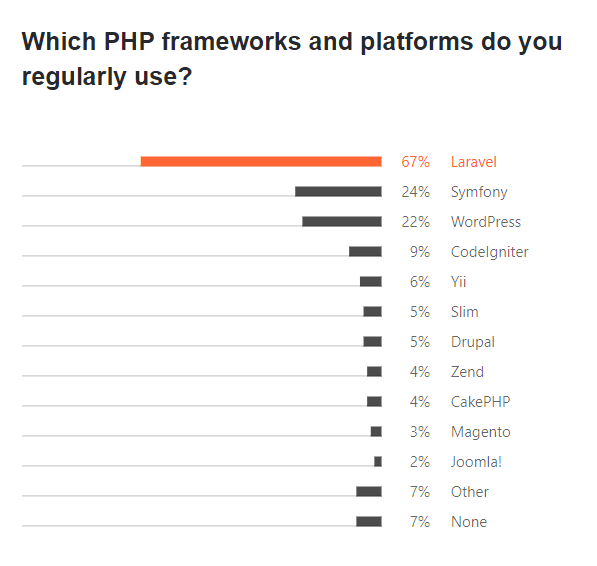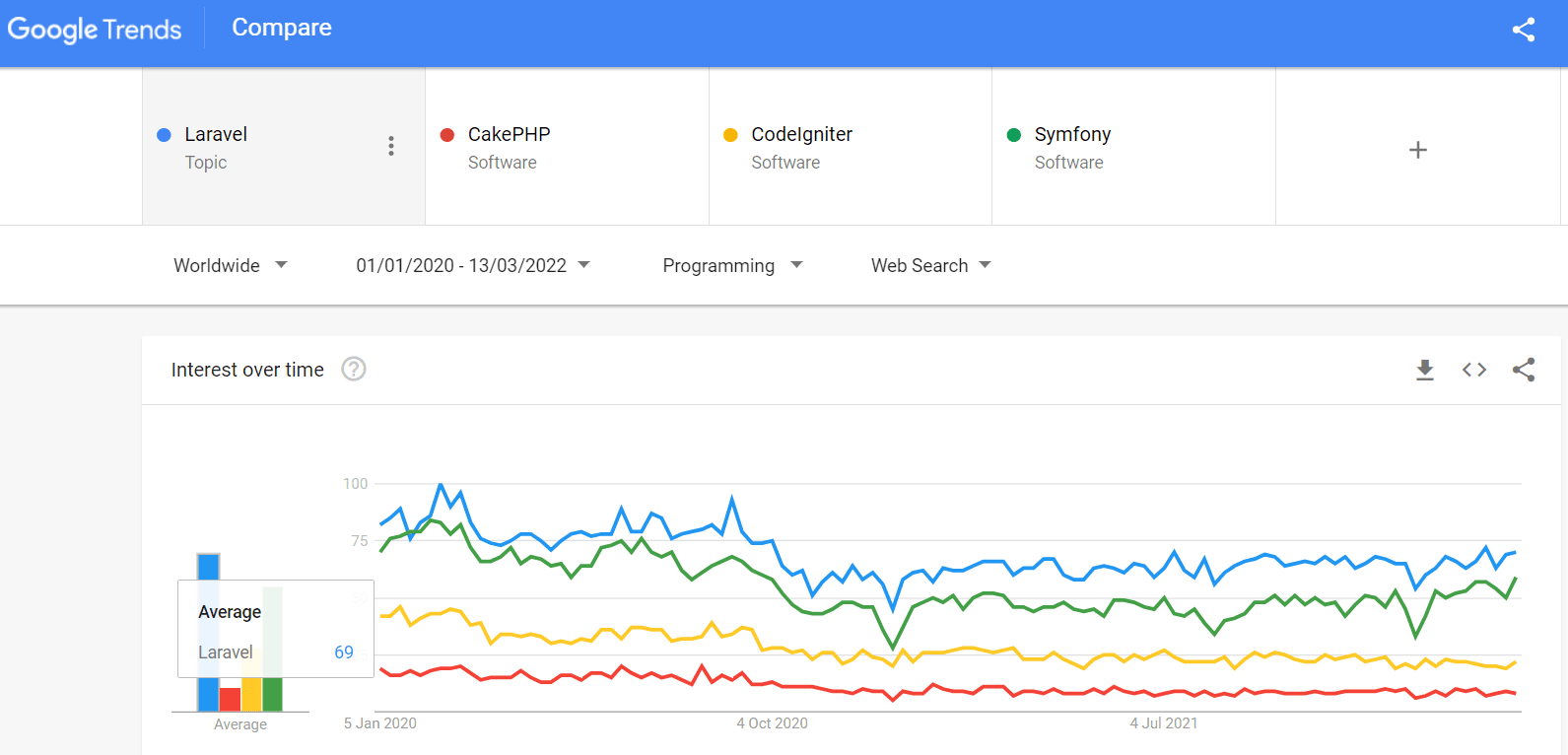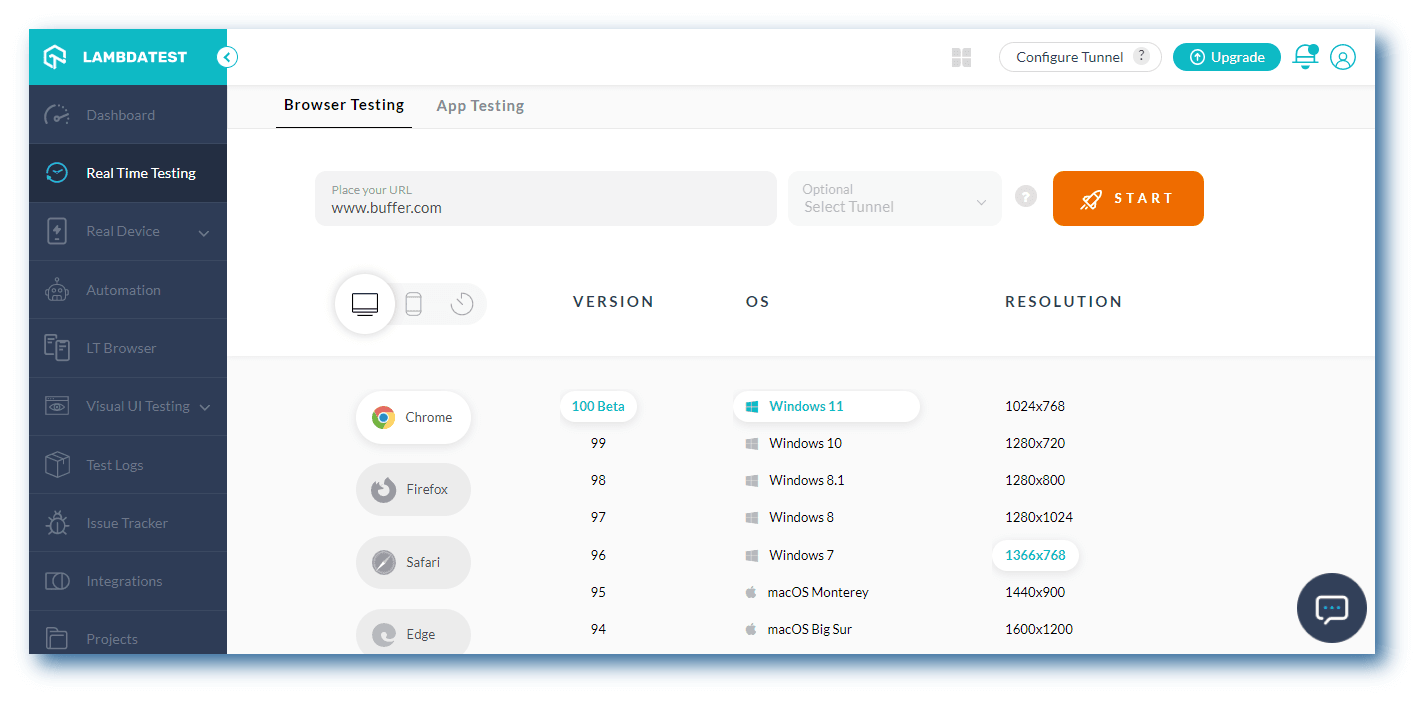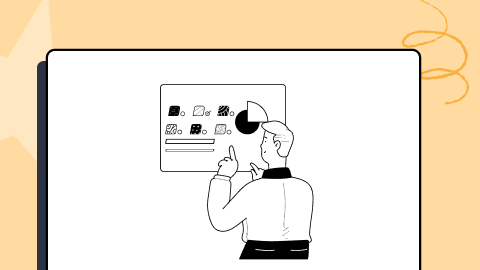Getting Started With Laravel Testing- Laravel Testing Application
Gifthiya Begum
Posted On: March 31, 2022
![]() 41090 Views
41090 Views
![]() 15 Min Read
15 Min Read
If you’re reading this, it’s either because you’re curious about the factors that go into Laravel testing and how to implement them in your application or because you just want to improve your knowledge of Laravel testing. Whatever your goals may be, you will have something to take away after reading this article.
So without further ado, let’s get an overview of Laravel and a few interesting facts about the most popular PHP frameworks for web application development.
TABLE OF CONTENTS
An introduction to Laravel
There is a framework in whatever language you choose to develop for building web applications. For example, if you come from a PHP background and want to develop a web application, then Laravel is the best web application framework at this time. This is because Laravel saves time in web application development. In addition, it is battle-tested for usage and keeps your code neat and maintainable.
Laravel, created by Taylor Otwell, is an open-source PHP web framework based on Symfony. Symfony is yet another web application framework in the PHP world that offers right out-of-the-box with several reusable PHP libraries and components. Laravel follows the famous MVC (model–view–controller) architectural pattern to design web applications.
One of the main reasons behind Laravel’s creation is to make the development process a pleasing experience for the developers. By doing so, a great amount of productivity and an effective outcome can be expected in return.
“Happy developers make the best code”
However, to achieve a pleasant developers’ experience with the framework, Laravel does not give up any critical functionality required to build a web application. The creator and the open-source community have ensured that all the required features, including those popular in other language frameworks such as ASP.Net, Sinatra, and Ruby on Rails, that can help contribute to the developers’ experience are constantly included in the Laravel framework.
Also, read – 16 Best Ruby Frameworks For Web Development
Although there are several web application frameworks are based on PHP language, Laravel has stood out and keeps dominating the PHP market segment. A recent survey from JetBrains revealed that the usage of Laravel has dramatically increased in the year 2021 by 17 % (50 % to 67 %) from that of the previous year.

The following Google’s search trend (Trend period from 01-Jan-2020 to 13-Mar-2022) shows that Laravel tops the search among other PHP frameworks.

The main reason that you are reading this article could be that you are now dealing with a Laravel based web application, wondering about the aspects involved in testing, and how to proceed with Laravel testing using the testing frameworks, libraries, and platforms that exist for this purpose. If that is the case, you have come to the right place, and let’s dive into this Laravel Unit testing tutorial based on web applications.
Testing a Laravel Application
Most programmers understand the fact that it is a good thing to write tests for the code they develop. Some likely have an idea of why it is essential, and some even know how to do it. However, there is always a group of people where there is a wide gap of understanding between why it is essential to have tests and how to carry out those in real application development. Laravel offers out-of-the-box testing tools such as PHPUnit, Mockery, Faker, and Dusk to narrow down this gap among PHP programmers.
PHPUnit is used for Unit tests development, whereas Mockery is used for mocking a database session object, repository, or just another dependent class, etc. Faker is to create fake data for testing purposes. Dusk is a frontend testing framework used for testing a JavaScript application.
To make things easier, the Laravel application gets pre-packaged with a sample application test that can execute successfully when building the application. This denotes that no additional configuration is expected from the programmers to set up the basic test environment required for your application.
Apart from these tools, you would need
- Browsers and machines of different Operating systems to carry out or simulate end-to-end testing of your Laravel web application.
- Continuous Integration (CI) pipeline to automate the build and tests execution process.
- Case tracking system to create bugs/issues for the failed test cases of your CI pipeline.
Read – How To Generate PHPUnit Coverage Report In HTML and XML?
Different types of Laravel Testing
As part of this Laravel Unit testing tutorial, we will see six types of Laravel testing strategies to test your Laravel application.
- Unit tests
- Feature tests
- Integration tests
- Acceptance tests
- Live/Real-time tests
- Responsive tests
Read more – Key Elements of an Effective Test Automation Strategy
Unit tests
Unit tests represent the smallest testable piece/isolated piece of an application. This is a fact and does not just apply to applications developed only in the Laravel framework. Usually, testing a method in a class falls under this category. In the case of developing Unit tests for Laravel applications, you can use PHPUnit.
Steps involved in Unit testing
Developing a Unit test usually involves three simple steps:
- Prepare: Define the variables, instantiate objects, define and inject mocks
- Execute: Call the method (an isolated piece of our Laravel web application) that needs to be Unit tested
- Assert: Compare the expected output against the actual
Whatever may be the programming language that you choose for developing applications, every Unit test follows the above three simple steps.
Here’s a sample algorithm snippet for a Unit test case to test the number of elements in an array
|
1 2 3 4 5 6 7 8 9 10 |
Algorithm snippet // Prepare - Defining and initializing the variable $cities = []; // Call the method to test (In this case, count) $items = count($cities); // Assert the expected value 0 against the actual output stored in $items $this->assertSame(0, $items); |
Isolation is the key
A fundamental aspect to develop a Unit testing code is to test the subjective method in isolation. This means that all external classes/dependencies which are not directly related to the class method that you are about to Unit test should be mocked. Remember, isolation is the key in Unit testing.
For instance: When Unit testing a service class method that deals with reading from a database table, should not hit the database table as part of Unit testing’s scope. Instead, the database repository object should be mocked for Unit testing. One could use Mockery for this purpose in Laravel testing.
Make your Unit tests independent of the order
A Unit test should never be dependent upon other Unit tests. For instance, don’t set a state variable in one of the Unit tests and make that a dependent state for another Unit test to pass or execute successfully. In other words, a good practice is that each Unit test has to have its state of variables/objects to deal with, and it should get executed in any order. Ensure that the Unit tests in your Laravel web application satisfy all these principles/rules.
The latest and smarter approach to executing the Unit tests
Once you have developed your Unit test cases using PHPUnit, you could use the LambdaTest Selenium Automation platform that enables you to execute automation test scripts on a scalable and secure Selenium infrastructure.
Since the Laravel web application involves Unit tests written on methods involved in user interface pages, you can plan and execute automated browser testing in the LambdaTest platform with Selenium scripts on an online device farm of 3000+ real browsers, operating systems, and multiple device-based environments, allowing your project to reach higher test coverage.
In addition to these, you could
- Significantly reduce your overall elapsed time of the build process
- Auto creates bugs or issues in your favorite bug tracking tools like Jira, Hive, Trello, etc.
- Access the test run logs corresponding to the past test runs from one place
Don’t worry if your test environment is in a local data center. This is because, with the LambdaTest Tunnel feature, even if your Laravel web application resides on local data center servers, you still be able to run Laravel tests on the LambdaTest platform in the cloud and get all the above-mentioned benefits.
Here’s a quick video of the online Selenium Grid offered by LambdaTest for performing automation testing.
You can also Subscribe to the LambdaTest YouTube Channel and stay updated with the latest tutorials around Selenium testing, Cypress E2E testing, CI/CD, and more.
Feature Tests
Testing to ensure that a particular application’s feature works in the way it is supposed to work is called Feature testing. A feature testing is a bit broader than the scope covered by Unit testing as a single feature might depend upon multiple method calls and ensure that the complete feature works in an application. You have to test the entire dependent flow in the application. Note that those can be mocked if a feature involves third-party system calls or external dependencies. We will see integration tests come into play when dealing with external dependencies/external systems.
Because of this aspect of testing multiple methods related to a single feature of a Laravel application, developing a feature test code is tougher and more challenging than Unit tests. To develop a feature test, the developers can again use PHPUnit, a Unit testing framework.
Integrations Tests
A Unit test developed for the application ensures that code works as expected in isolation. In that case, an integration test will ensure how those different individual methods and their dependencies glue together to achieve the defined functionality of the application. These tests are similar to feature tests in that they will touch upon multiple methods of your application. Still, it also deals with external applications/interfaces/data repositories. Integration tests, in general, won’t depend on mocks.
For instance, let’s consider a vehicle, the fuel injection mechanism, the gearbox, and the engine might individually work as expected. However, the goal in the case of an integration test is to verify whether these components will work when assembled as a single integrated Vehicle?
Example integration test scenarios in a Laravel application
- In a Laravel web application, you will have a route defined for the incoming request to your controller methods, that in turn calls service methods to execute the defined business logic of the application. For example, this might deal with an image upload to AWS S3 or Azure blob storage or file reads from any commonly accessible storage systems. Testing such routes involves testing all these parts that exist within the application and testing by connecting to the external parts of the application. This is a typical scenario of an Integration test.
- Your Laravel web application deals with a database for accessing the data. In that case, you as a developer or test programmer need to set up an in-memory or test database to perform integration testing. Therefore, you should not mock or stub a repository as you do in the case of Unit testing.
Acceptance tests
While the Unit tests, feature tests, and integration tests help to meet a developer’s requirement, the acceptance tests are the ones that ensure the end-to-end application specifications or requirements that are implemented as expected.
For instance: Your build pipeline in the continuous integration tool might get successful, passing all the developed Unit, integration, and feature tests. However, when the solution is deployed in production, it might not meet the end-user requirements. This is where the role of Acceptance tests comes into play.
Popular Frameworks for Acceptance Testing
PHPUnit, which comes with out-of-the-box tooling with Laravel, does not provide all the needful helper utilities to develop the end-to-end acceptance tests.
One could use either Laravel Dusk or the Codeception framework to develop end-to-end acceptance tests in the case of a Laravel web application.
Laravel Dusk
Laravel Dusk leans more towards the Browser Automation test category, whereas the Codeception framework can carry out Acceptance testing in addition to Unit tests and feature tests.
Laravel Dusk can be used to test the Laravel web applications programmatically and in which you can open a web page using a real Google Chrome browser, perform tasks automatically that are repetitive, crawl through sites, and scrape information from the pages to test if the application works in the browser.
Codeception
Codeception, which is custom-built upon popular frameworks and libraries, like PHPUnit, Mink, etc., could interact with Laravel web applications on a high level using a simple, readable interface that even business users could use.
With Codeception, you could perform browser testing using Google Chrome, Firefox, Safari, or the cloud testing platform combined with Selenium WebDriver. Using Codeception, the emulation of browsers with HTTP requests fired through cURL in combination with PHPBrowser is also possible.
Also, read – How To Speed Up Selenium Test Cases Execution?
A smarter approach to executing the Acceptance tests
A cloud-based automated testing tool like LambdaTest offers the benefits of parallel testing to perform Laravel automated testing without installing and maintaining a local Selenium Grid. Whatever may be the framework (Dusk or Codeception) that you choose for performing acceptance tests of your Laravel application, when it comes to integration and execution of acceptance tests on a platform to increase your productivity, reduce build time and cost, check out the services provided by LambdaTest platform. With LambdaTest, you can perform parallel testing on an online browser farm of 3000+ browsers and operating systems.
With LambdaTest, you could easily integrate your Laravel Dusk test scripts with Selenium or Codeception test scripts with Selenium and use the LambdaTest platform to perform automated testing with Laravel
Live testing of your Laravel application
In addition to automation of test scripts execution, if you would like to carry out Live testing of your Laravel application, from time to time, in an ad-hoc manner, you could explore the real-time browser testing offered by the LambdaTest platform.
If you have the question of why can’t I do it in a standalone browser installed on the local machine, the answer is, yes, it is one way to do that. However, because any user base might access your web application and have any operating systems or browsers on their personal laptop/workstation, the device’s form factor, etc., you just don’t have control over it. So it is best in all ways and economical for the organization to explore and make use of such infrastructure provided by LambdaTest to use it for carrying out Live testing of your Laravel application.
LambdaTest’s real-time browser testing will be a great choice for manual live testing of your Laravel web application. Just sign up on LambdaTest (if you have not done so already) and try the features available on their platform.

To get started, here is our video tutorial on real-time testing.
Responsiveness tests
Designing a web application that is responsive has become the defacto standard in the industry and the web applications designed by Laravel are not exempted from it. This is because a responsive web application facilitates an optimal rendering of the application on any device, be it a smartphone, laptop, tablet, or desktop.
However, it is quite challenging to implement an automated responsive testing strategy for a web application or website designed using Laravel. This is because it involves the need to test all the implemented web layouts in the application and their corresponding navigation options.
To make responsive web application testing an easier task, you could use LT Browser, a mobile-friendly tester for running responsiveness tests across 50+ pre-installed viewports like mobiles, tablets, desktops, and laptops. With the LT Browser, you could achieve responsive tests that work for various layouts present in your Laravel website or web application. You could also control the browser’s viewport’s dimension, precisely target the layout transition points, include layout-oriented assertions, and visually verify the exactness of your Laravel application’s layout.
Learn more about LT Browser in the video tutorial below.
For a more comprehensive understanding of Laravel, you can explore our specialized hub centered around Laravel Interview Questions.
Closing thoughts
In this article on Laravel testing, we started with an introduction of Laravel, with a few interesting stats that prove Laravel is the most popular web application framework amongst PHP developers and testers. We then learned about the test frameworks, libraries, and tools that are popular in Laravel web application testing and what roles they play in testing.
Next, we have listed different types of testing that usually come into play while performing Laravel testing of web applications. We also read about how a test platform such as LambdaTest can help you run Laravel tests and carry out live browser testing in less time and at increased cost-benefit.
With those closing thoughts, I wish you to explore a more innovative and trendy testing arena available in the market. On a side note you can perform automation testing with Larvel Dusk framework through LambdaTest on 3000+ real browsers hosted on a cloud Selenium Grid.
Frequently Asked Questions (FAQs)
What is Laravel in testing?
The CreatesApplication trait in Laravel is applied to the base TestCase class of your application. The create application function in this trait bootstraps the Laravel application before running your tests.
What is a facade in Laravel?
A facade is a class in a Laravel application that allows access to an object from the container. The Facade class includes the mechanism that creates this work. The main IlluminateSupportFacadesFacade class will be extended by Laravel’s facades, as well as any custom facades you design.
What is middleware in Laravel?
Middleware provides a simple way to analyze and filter HTTP requests as they enter your application. Laravel, for example, has a middleware that validates your application’s user is authorized.
Got Questions? Drop them on LambdaTest Community. Visit now















